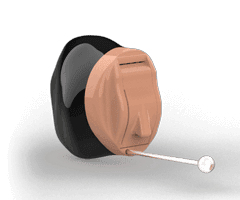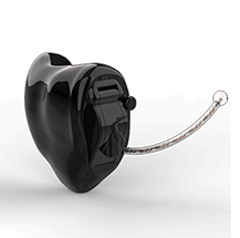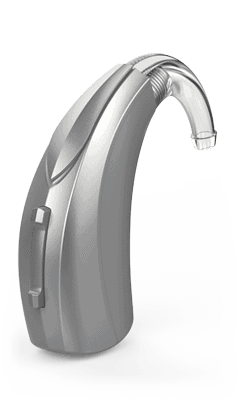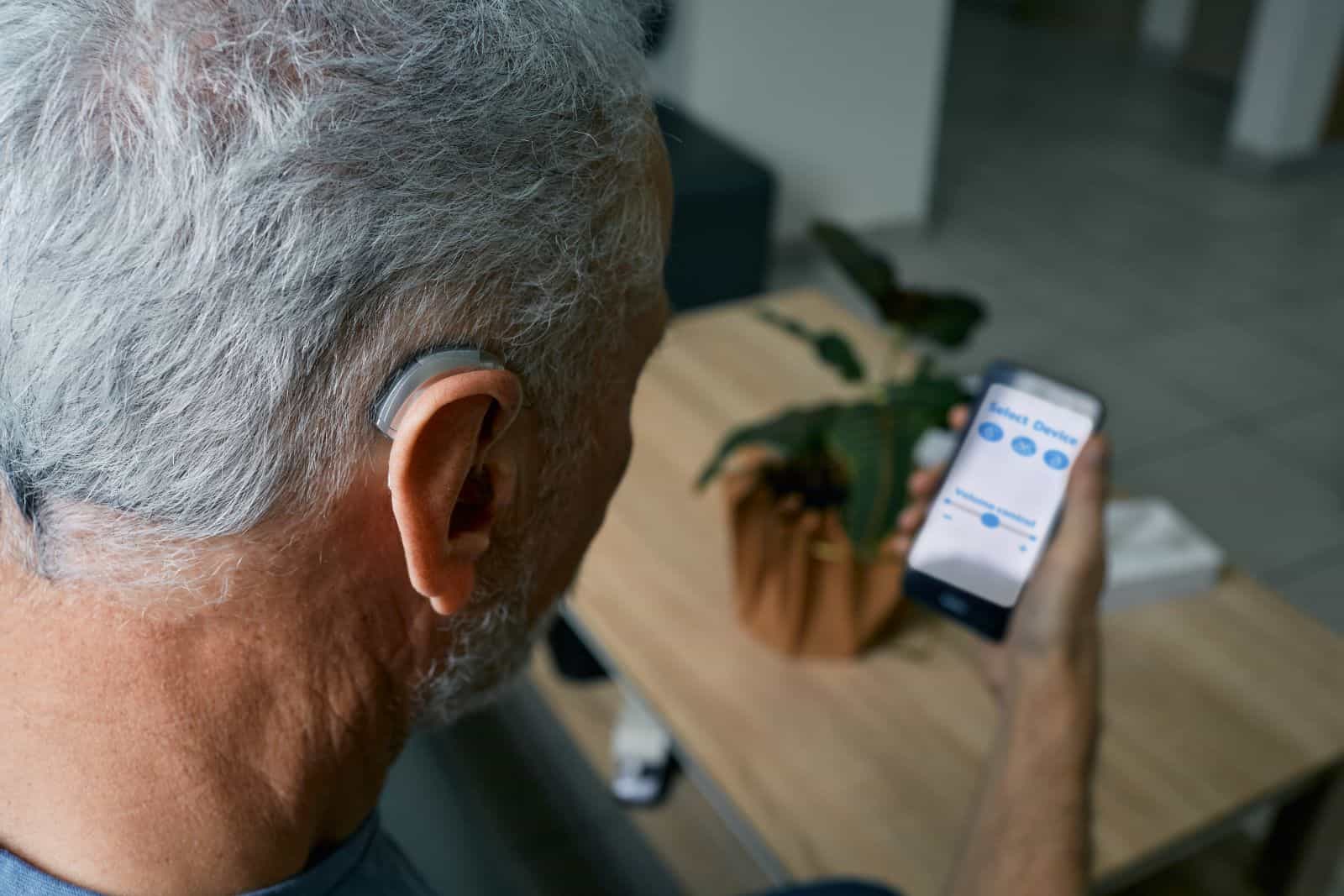Hearing Aids
It is an exciting time for hearing technology. Hearing aids now come in many shapes and sizes, with sophisticated technological features and ultra-fast processing systems! Though it may seem daunting to decide which devices are right for you, our team at Roosevelt Field Hearing is here to help.
When it comes to hearing aids, there are styles to suit everyone, whether you want a small, discreet design, completely automatic or something you can customize from your smartphone. Our professionals will guide you in selecting the best style and technology options based on the degree and configuration of your hearing loss, as well as your lifestyle needs and listening desires.
Hearing Aid Styles

Invisible-In-Canal (IIC)
Invisible-in-canal (IIC) hearing aids are one of the most discreet options on the market and are practically invisible, hidden deep inside the ear canal when worn. These small devices are perfect for those with minor to moderate hearing loss, but users must be aware that due to their size, power output and availability of features are limited, while battery lifespans are much shorter than in other devices. As IICs sit far into the depths of your ear canal, a thin, transparent wire allows you to remove them with ease. If you want excellent sound quality without compromising discretion, IIC hearing aids are the perfect solution.

Completely-In-Canal (CIC)
Completely-In-Canal (CIC) hearing aids present an excellent option for those looking for discreetness and exceptional sound quality. Slightly bigger than IICs, they still offer comparable invisibility while incorporating powerful mechanics. The device is secured in place with custom-made ear impressions molded to the exact dimensions of the wearer's auditory cavity. They are removed in the same manner as IICs, with a clear, handled wire that is tugged on to release when necessary. While these devices are very beneficial for those with milder forms of hearing loss, their tiny size makes them difficult for people who struggle with manual dexterity to handle. Nevertheless, if managed carefully, CIC hearing aids are an excellent choice that offers a good balance of discreetness and audio fidelity.

In-The-Canal (ITC)
In-The-Canal (ITC) hearing aids are the ideal choice for those looking for a device with more features and power that maintains a certain degree of discreetness. Like IICs and CICs, these devices must be custom molded to fit your exact ear size and shape, which not only makes them extremely comfortable but also ensures better sound quality. ITC devices are larger than both CICs and IICs, making them the most visible of the three, but they enable more extended battery life due to their larger batteries. This makes them a great option for treating more severe levels of hearing loss while still providing outstanding comfort. While more perceptible with their significant profile, their impressive sound quality, extended battery life, and vast feature offerings make ITCs compelling solutions for all types of hearing loss.

In-The-Ear (ITE)
In-The-Ear (ITE) hearing aids are the most visible and well-known of the internally worn devices. They fit into the curved space at the entrance to your ear canal and come in full or half-shell options to accommodate all levels of hearing loss. ITEs are an excellent choice for those who need more help with their hearing since they can be effective for mild to severe hearing impairments. These devices are much easier to handle than some of their smaller counterparts due to their manageable size. Consequently, ITE battery life is unmatched by the smaller variants. Additionally, many ITE styles offer added features like Bluetooth connectivity or noise reduction, making them a top pick for those who need a bit more functionality from their hearing device.

Receiver-In-Canal (RIC)
Receiver-In-Canal (RIC) hearing aids allow users to benefit from many of the most up-to-date features and capabilities modern technology has to offer. The main body of the device is placed behind the ear, with a thin clear wire running over the earlobe that attaches to an inserted dome unit. This component contains both the speaker and receiver of the device and fits comfortably into the opening of your ear canal. Sound is digitally processed by the internalized receiver, which produces a more natural and lifelike sound with unparalleled clarity, free of distortion. The signals are then delivered to the eardrum from the speaker within the same dome piece, which is removable. The detachable component nature of RICs makes them incredibly convenient when it comes to repairs, as separate elements can be replaced without having to buy a whole new device – making them both economical and reliable.

Behind-The-Ear (BTE)
Behind-The-Ear (BTE) hearing aids are ideal for a wide range of uses, as they boast the most power and features of all other types of hearing aids. However, the trade-off is that they are also the largest and most visible type of hearing aid available. Regardless, BTEs can effectively treat any extent of hearing loss short of profound severities that require cochlear implants. In addition to their durability, this makes them perfect for young wearers, such as children and adolescents, as they can be fitted and refitted over time and essentially grow with their users. BTEs are also equipped with onboard directional technologies and controls like volume wheels and mode buttons, making them extremely user-friendly. Finally, with the longest battery life of all devices, you can enjoy the full benefits of their extra features worry-free.

